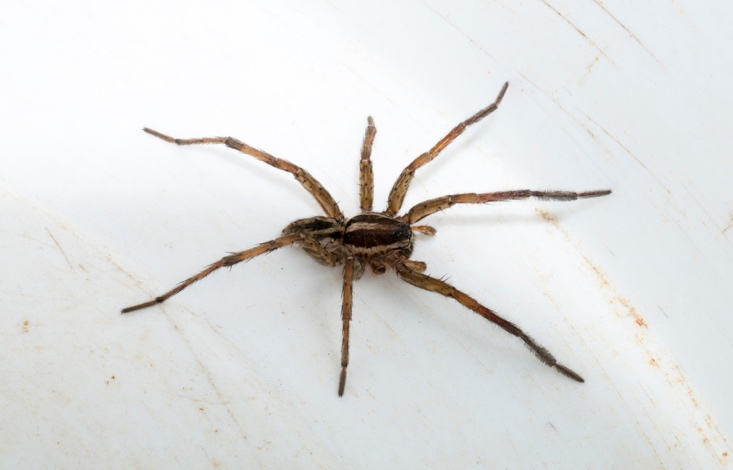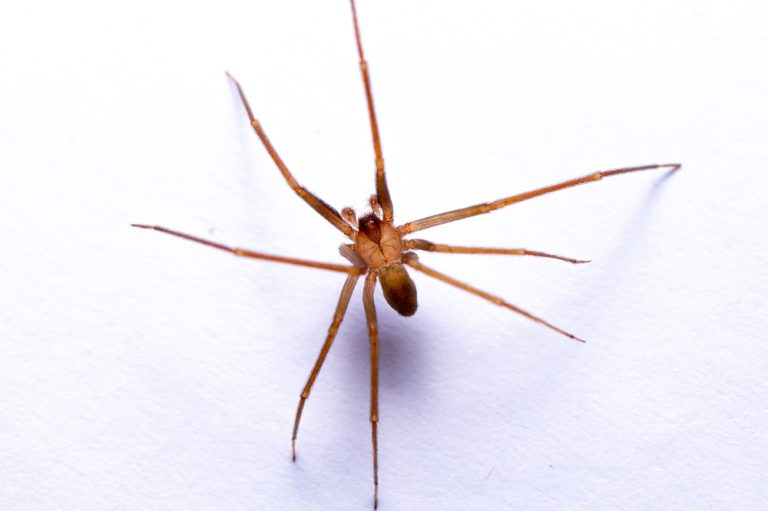
Experts in Spider Elimination in Missouri
Treat for spider infestations
While most critters enter your home simply in search of food and water, spiders have a little bit more on their agenda when it comes to invading. Spiders will enter homes through any crack and crevice they can fit into, looking for nourishment, warmth, moisture and even a mate.
Having an existing infestation of another insect can also be a reason for spiders to enter your home. While general insects enter your home for moisture and shelter, spiders enter your home to prey on those insects!
Another cause of a spider infestation is actual spiders being inadvertently brought into the home in boxes, furniture, or other items carried in. The most common places to stumble upon spiders are basements, garages, closets, storage areas, attics, crawl spaces, and any other undisturbed area. It is possible you have been sharing your home with spiders without even noticing them because they don’t like to be out in the open.

Types of Venomous Spiders in Missouri
There are several species of spiders in Missouri but only two are venomous
There are several species of spiders in Missouri but only two are poisonous – Brown Recluse and Black Widows. Black Widow spiders, while found in Missouri, are less prevalent. A comprehensive general interior and exterior treatment typically eliminates Black Widow spiders.
Brown Recluse spiders, on the other hand, are more frequently and commonly found in Missouri and are more of a challenge to eliminate. See more details below.
If you think you have either brown recluse or black widow spiders in your home but are unsure, visit our identify a pest page for more information or call us for an on-site evaluation.
Brown Recluse Spider Control
Brown Recluse Biology Basics
Both adult and immature Brown Recluse Spiders are capable of injecting poisonous venom which may result in serious damage to skin tissue and necrotic lesions. The venom continues to destroy tissue over a period of days to weeks which may result in a necrotic ulcer and a deep scar. If bitten, call a physician or go to the emergency room immediately!
- Found throughout Missouri and the central and southern states.
- Adults are 1/4 – 1/2 inches in body length.
- Tan to dark brown in color with a dark “fiddle” shaped marking on their cephalothorax.
- Females deposit 40-50 eggs in a silken egg sack and can produce 1-5 egg sacks in her lifetime.
- Eggs hatch in 25-39 days, undergo 6-7 instars and molts, and become adults in 7-12 months. Average life span is 2-4 years.
- Mostly nocturnal and feed on silverfish, cockroaches, crickets, and other soft bodied insects dead or alive.
- Adult and immature Brown Recluse produce poisonous venom that damage tissue.
- Bites are usually painless followed by soreness or intense pain within 6-12 hours.
- Pimple-like blister will usually appear along with swelling within 10-14 days.
- Dead skin may slough away in the bite area along with a possible open ulcer exposing muscle and/or bone.
- Brown Recluse are commonly found both indoors and outdoors.
Visit our Pest ID Library to Learn More About Spiders
Common Areas to find Brown Recluse
Brown recluse spiders can be found in a variety of outdoor locations. They often hide beneath rocks, piles of lumber or debris, and inside utility boxes. Woodpiles, tree bark, storage sheds, barns, and areas under porches also provide shelter. Cedar shake roofs are another common hiding place for these spiders.
Indoors, brown recluse spiders prefer undisturbed areas. They can be found in boxes, stacks of papers, clothing, and shoes. They may hide underneath tables and chairs, along baseboards, and in door and window moldings. Storage areas, wall voids, and spaces above suspended ceilings are also common hiding spots.
These spiders are frequently found in closets, bedrooms, bedding, garages, attics, crawl spaces, and basements. They may also take shelter behind insulation and in any other quiet, undisturbed area of a home or building.
What’s the Solution?
Short-Term Treatment:
Effective control of brown recluse spiders starts with a thorough inspection and initial treatment. This includes treating the exterior, interior, attic, crawlspace (if present), and all accessible void spaces. A combination of residual sprays and dusts is used to target spiders where they hide. For the best results, the initial treatment should be followed by 2-5 monthly services to ensure continued control.
Long-Term Treatment:
Long-term control involves following the same comprehensive process as the short-term treatment. To maintain spider elimination, ongoing service is recommended. Regular service programs include monthly, bi-monthly, quarterly, 5 Star service, or Steve’s Lake Service, providing consistent protection against brown recluse spiders.
Got Spiders on Your Lake Ozark Home’s Dock? Here Are 5 Tips to Keep Those Creepy Crawlers Away.
Spider Elimination Services in Missouri by Steve’s Pest Control
Thorough spider elimination treatment includes treatment on the exterior, interior, attic, and crawl space (if present). Excessive interior clutter, storage, and undisturbed areas can contribute to the magnitude of the spider population. Exterior conditions such as dense vegetation, wood piles, stored items, yard clutter, etc. can also contribute and allow conducive conditions suitable for spiders.
If you find yourself needing to remove spiders from your home, know that you can trust the experts from Steve’s Pest Control to get the job done right. We take a proactive approach in our spider control treatment plans, meaning we stop the infestation at the root of the source. Our methods are long-lasting and minimally invasive, with respect to you and your home. Before we make a recommendation to eliminate a spider problem, we will need to determine if Brown Recluse or Black Widow Spiders are present within your home. Once this evaluation is made, we will recommend a treatment strategy to best solve the problem.
View our pest library to help determine the type of spiders that are bugging you!
FAQs
Common Questions about Spider Pest Control
What types of spiders are commonly found in homes, and which ones are harmful?
Common house spiders are typically harmless, but venomous spiders like black widows and brown recluses can pose a danger.
How can I identify a spider infestation in my home?
Signs of a spider infestation include the presence of spider webs, egg sacs, and an increased number of spiders in and around your home.
Are spiders harmful, and do they transmit diseases to humans or pets?
Most spiders are not harmful to humans or pets. However, some venomous species can deliver painful or dangerous bites.
What attracts spiders to my home, and how can I prevent spider infestations?
Spiders are attracted to insects, so keeping your home clean and free of other pests can help prevent spider infestations. Seal cracks and crevices as well.
What methods do pest control services use to eliminate spiders in residential settings?
Pest control services use various methods, including spraying insecticides, traps, and preventive measures, such as sealing small openings around doors and garages to control spider populations.
How long does it typically take to get rid of a spider infestation in my home?
The time required to eliminate a spider infestation varies based on the extent of the problem but usually takes a few weeks. It is also important to do follow up treatments throughout the year.
Are the pesticides used in spider pest control safe for children and pets?
Pest control professionals use safe and approved pesticides. They also take precautions to minimize exposure to children and pets.
Can I use DIY spider control products or should I hire a professional? Can pest control get rid of spiders?
DIY products can help, but professional spider control is more effective. Yes pest control services can eliminate spiders and keep them away with consistent treatments throughout the year.
What steps can I take to prevent spiders from returning after treatment? Why am I seeing spiders after pest control services?
Seal entry points, remove plants and weeds from the perimeter of your home especially around doors and openings, and consider ongoing spider pest control services to prevent future spider infestations. If you continue to see spiders after a pest control treatment, it’s advisable to contact Steve’s pest control to discuss your concerns. They may recommend additional treatments or adjustments to address the ongoing issue.
Are there specific types of spiders commonly found in residential settings, and how do they differ in behavior and appearance?
Common house spiders and cellar spiders are often found in homes. Our pest control experts will identify the specific species and tailor treatment accordingly.





